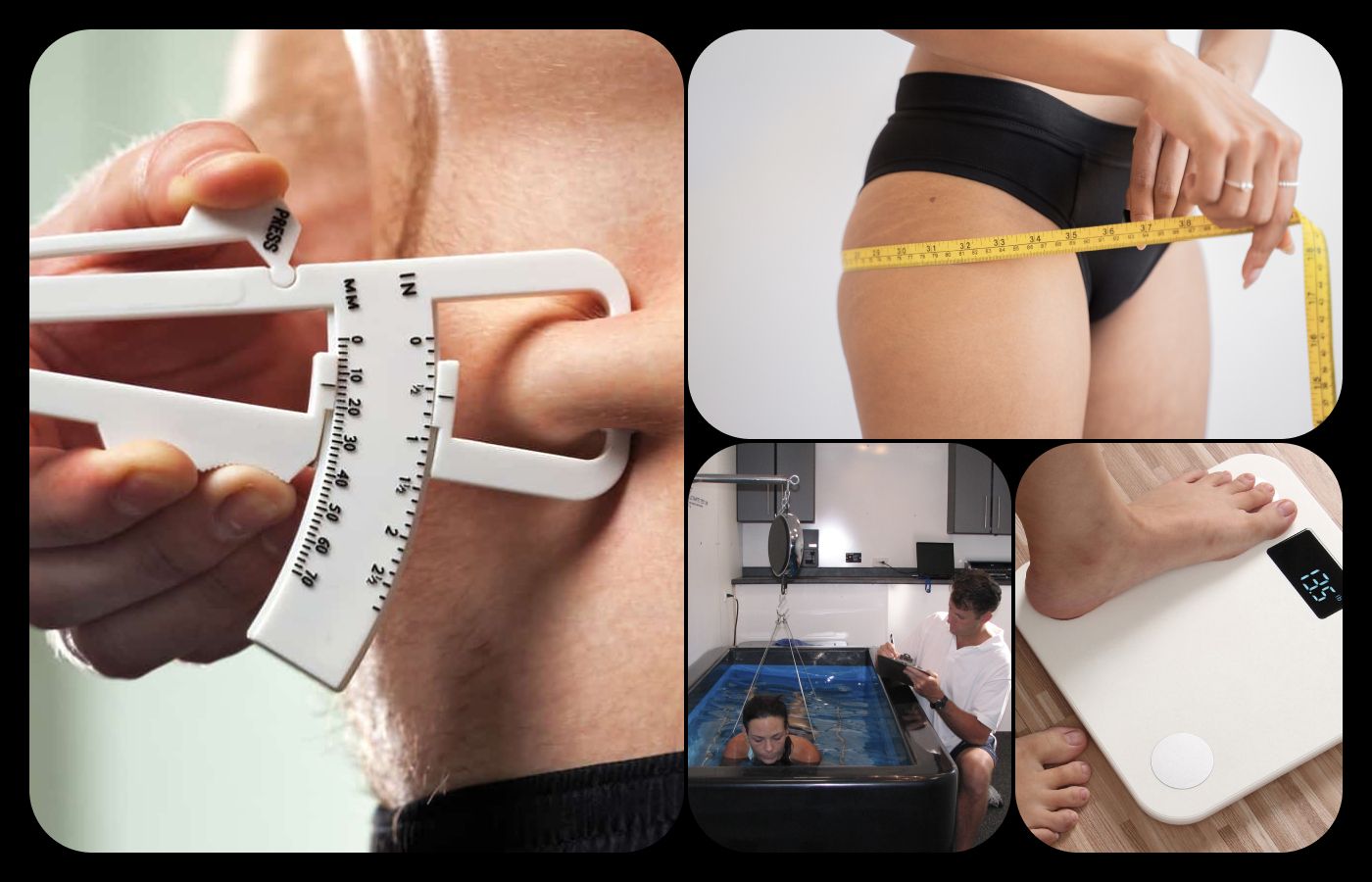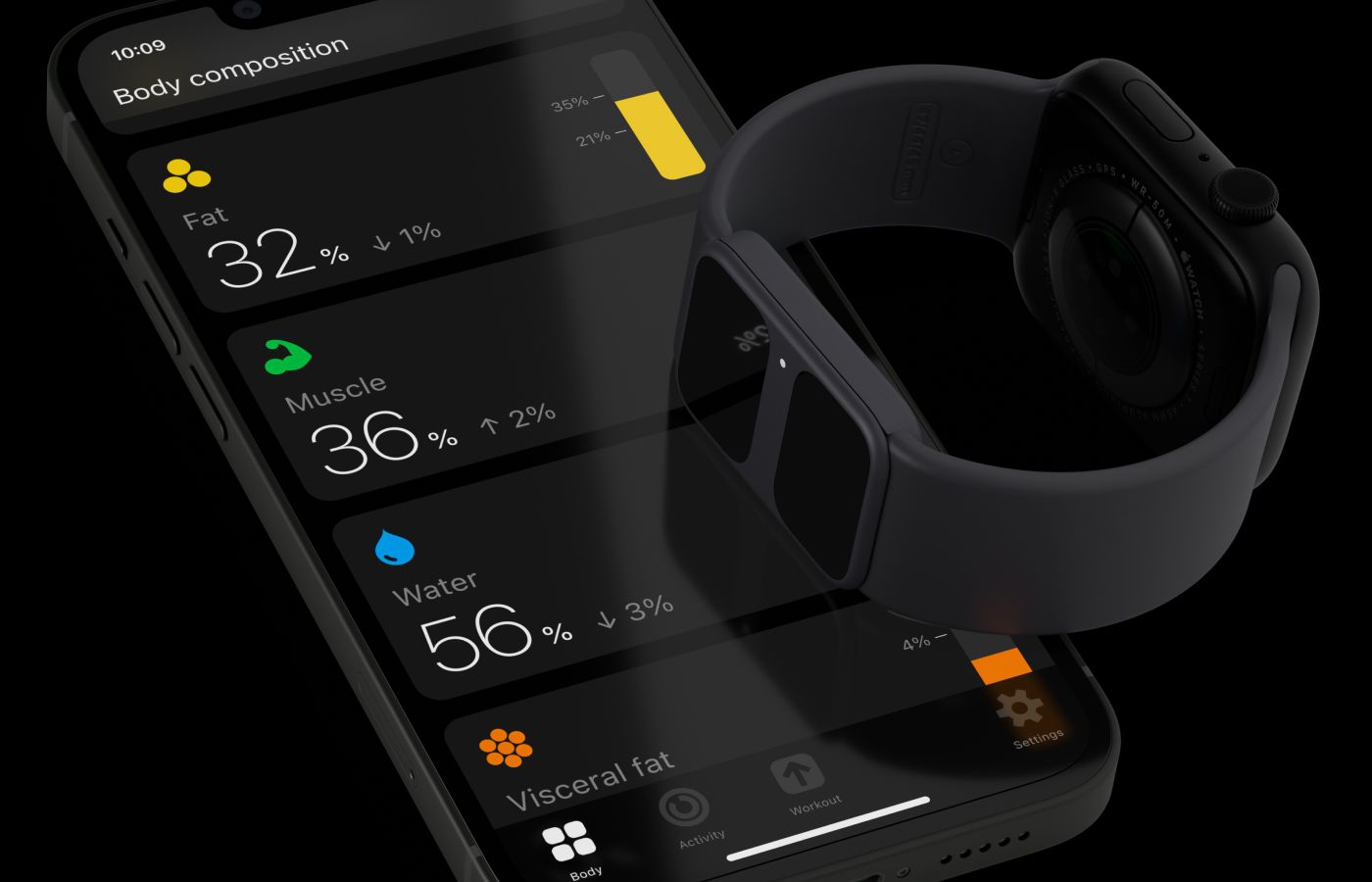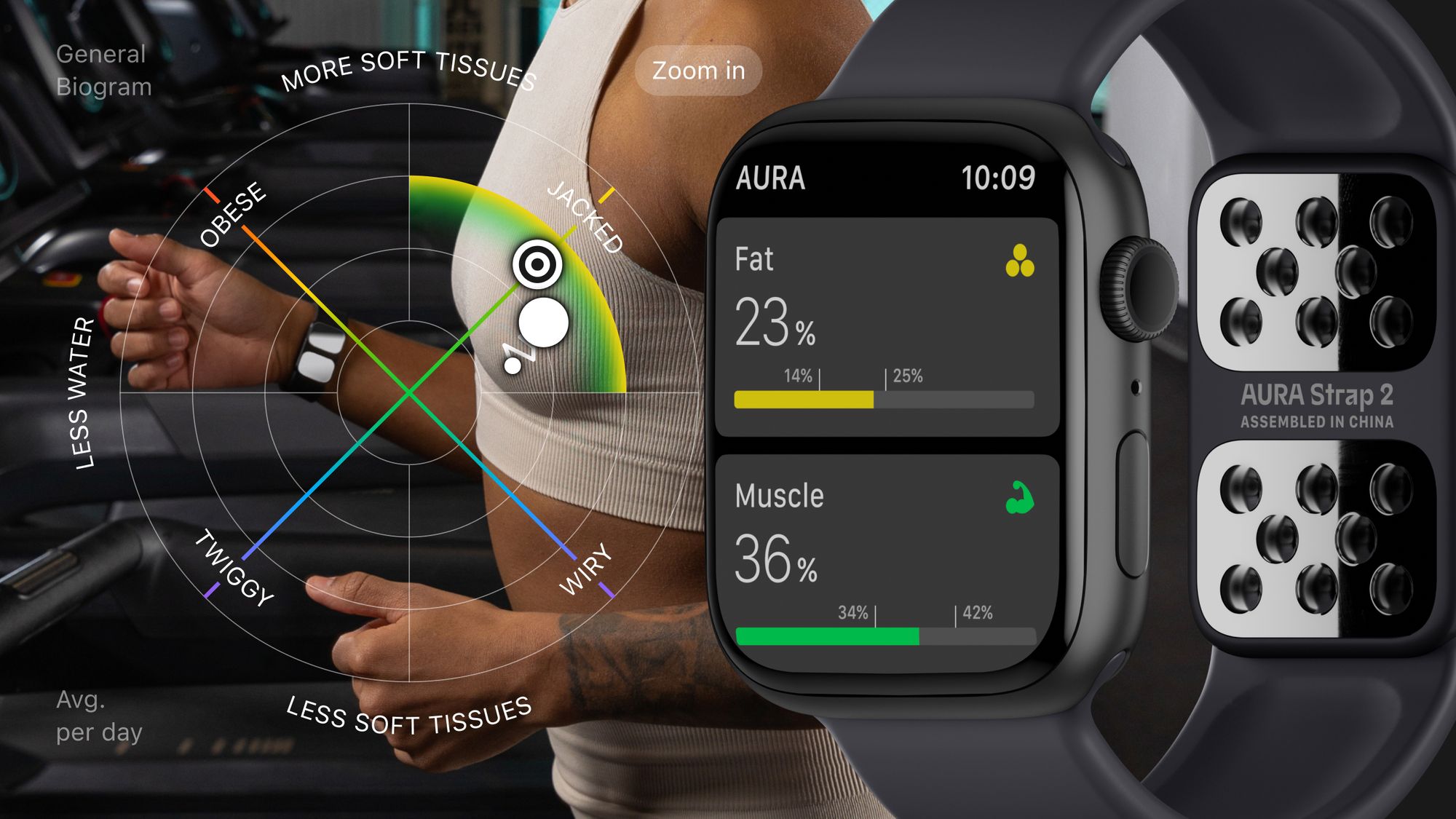Remember in Rocky IV, when it showed that montage of Rocky and Ivan Drago training for their big fight? Rocky was using traditional methods, while Drago was using advanced technology. We’d like to imagine that some of those computers with the flashing lights were used for measuring body composition. In the end, Rocky had more heart, but what if you could have Rocky’s heart plus Drago’s body composition analysis? (And without those mysterious injections, of course.)
In this series of articles, we will discuss body composition in health and physical fitness, and how you can vastly improve your health outcomes and reach your fitness goals by tracking your body composition.
What is body composition?

Body composition is a general term in physical fitness that represents the percentages of muscle, fat, bone, and water in the human body. Two people may weigh exactly the same but look completely different because these materials vary in density, so the real difference lies in body composition.
You may be thinking that body composition is related to body mass index (BMI), but that is a more general measurement that only takes your height and weight into account. It can be a good rough measure of body fat percentage, but is not accurate when used to measure body composition.
Also, you may have heard of the three so-called somatotypes: ectomorph, mesomorph, and endomorph, representing slim, muscular, and round body types. However, these classifications were conceived in the 1940s, and body science has evolved since then. Body composition provides much better guidance on a person’s fitness and general health level, and there are way more than just three examples of body composition.

The American Journal of Clinical Nutrition provides figures for healthy body fat percentages according to age:
Similarly, here are the normal ranges for muscle mass, according to the Journal of Applied Physiology:
How does body composition analysis work?

Knowing where you are in the range of normal fat and muscle mass is a crucial part of staying healthy, and that’s why it’s important to keep track of these and other factors by monitoring your body composition. But how does it work?
There are several methods of determining body composition that are used in the healthcare industry. You may have seen a doctor use skin calipers to measure skinfold thickness to get a good estimate of body fat. Another popular body composition test that’s even more accurate is hydrostatic (underwater) weighing, since fat floats. There’s also a technique that uses air instead of water called air displacement plethysmography. (You may have heard it called a “body pod.”) The current industry gold standard is known as DEXA, and uses varying levels of X-ray absorption to determine different tissue types.
AURA Devices uses a technology called bioelectric impedance analysis (BIA) to measure body composition. It's the same technology used in another popular body composition calculator known as a smart scale. The AURA Strap 2 shows 95% of the measurement accuracy of a DEXA scan. (Not bad for a wearable device!) It passes a low electric current through the body and measures the electrical resistance to that current, which makes it possible to calculate total body water percentage.
Get AURA Strap 2Once total body water is determined, other information can be deduced, such as fat mass, lean mass, and muscle mass, giving you your body fat percentage and several other useful indicators. To learn more about the technology behind AURA Devices and body composition measurement technology in general, check out this article.
Why use a body composition tracker?

What does a standard fitness/diet routine look like to you? You pick a diet and workout routine from an infomercial, the internet, advice from a friend, etc., and you step on the scale every day to see the results. But the problem is, weight alone doesn’t give you the information you really need to see if you’re on track: you may pack on a couple of pounds one week, drop a few the next, and then go right back to where you were.
That’s why body composition tracking is so important for a complete diet/training routine. You can do specific body composition exercises and fine-tune your diet while monitoring your body to make sure you’re getting the right inputs and outputs, and doing everything at a healthy pace.
With a fitness tracker like AURA Strap 2 attached to your Apple Watch, you get the detailed information you need to find out whether your diet and workout regime are truly effective. Are you packing on more muscle? Losing fat? Are you hydrated enough, and are you getting the right amount of protein and minerals to get the most out of your efforts? These are the types of details that are really important to know if you really want to spend your time wisely and know how healthy you are.
Know your bodyWhat kind of body composition data should I monitor?

We’ve already discussed muscle and fat, but there are several other body composition parameters you should keep an eye on to help make sure you’re fit and healthy:
* Everything else is detected automatically, but these figures are based on the information you enter.
AURA Strap 2 comes with AURA App for Apple Watch, which is like having your own personal trainer and advanced health laboratory right on your wrist. (Ivan Drago, eat your heart out!) That’s right: it’s your Apple Watch body composition tracking homebase. In the app, you will be able to collect all the information listed above, plus get diet and exercise recommendations.
Start monitoring body compositionConclusion
A scale just isn’t enough anymore to give you all the information you need for your diet/exercise regimen. It’s crucial to monitor your body composition as a whole to make sure you’re on the right track on your health and fitness journey.
Fortunately, the days of the “weigh-and-pray” method are over. Now, with body composition measurement and tracking, you can not only track body fat, but get important information on your entire body composition. Knowledge is power!
And don’t forget: you can get even more with the complete AURA Plus fitness service, including advanced analytics, fitness tracking, monthly reports, and personalized workout content to supercharge your health and fitness journey!
Thanks for reading, and stay tuned for the next article in our series! In that one you will learn about body weight and what it tells us, besides numbers.


